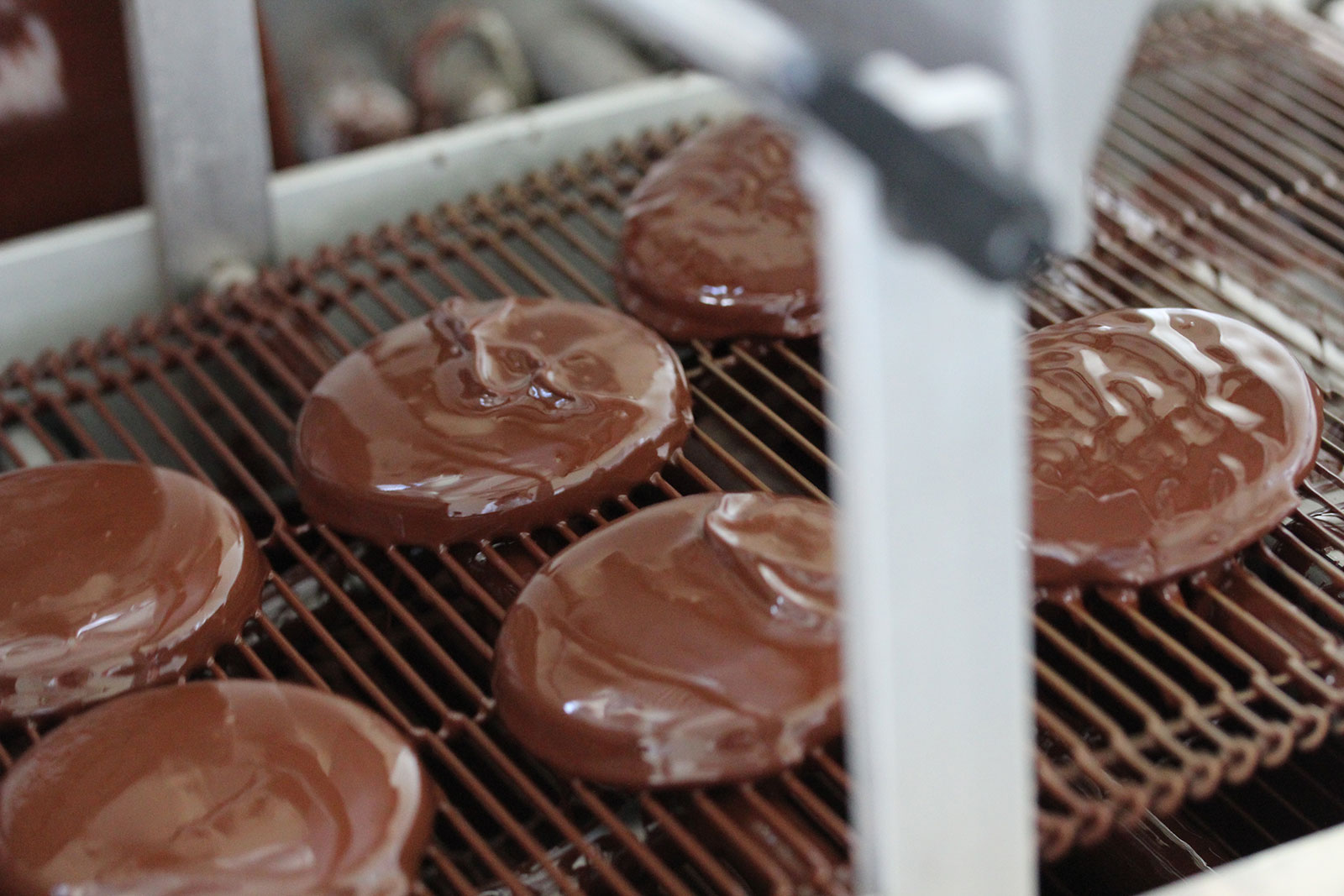Perfect chocolate sheen on confection and sweets
White flecks on sweets with a chocolate glaze are harmless – but esthetically unappealing. More than just improper storage can diminish the glossy sheen. Researchers have discovered other weak points in the production process. Armed with sophisticated analysis, companies can now protect their products effectively from the undesirable coating.
They are harbingers of the Christmas season: gingerbread, marzipan sweets, spiced cookies, macaroons, truffles and others are all filling the supermarket shelves in the autumn. Enrobed in chocolate coating, these baked Christmas favorites are enticingly mouthwatering for any sweet tooth. But after the consumer unpacks them, the chocolate products seem to be covered with whitish coating. Experts refer to this phenomenon as “fat bloom”. Even excellent products with chocolate coating could lose their gloss after a certain amount of storage time has passed, and develop a grey patina. Fat bloom is often mistaken for mold, but it really has nothing to do with this. It has no effect on the taste of the product, and the product is not ruined by it. Nonetheless, the unsightly coating has an adverse visual effect on these treats; they lose some of their quality. ”Production of Christmas baked goods already starts in July. This is where the problem lies. Fat bloom does not appear immediately after production, but instead appears days or even weeks later. It can be one of the consequences that come from storage that is too warm, or under temperatures that sharply fluctuate,” explains Wolfgang Danzl, food quality expert at the Fraunhofer Institute for Process Engineering and Packaging IVV in Freising. The researcher and his team are helping food makers with their efforts to improve the resistance of their products with chocolate coatings from white flecks.
Small- and medium-sized enterprises suffer the greatest impact, because they produce a majority of the confections and baked goods. Chocolate coatings represent an effective technique for refining these products. In the process, the pastries, cakes, waffles, and bars are run through a fluid, pre-crystallized chocolate stream. They then have to swiftly crystallize within the cooling channel - in other words, solidify - so that a shiny surface results. IVV researchers discovered that this stage is precisely where fat bloom can arise. ”It is not uncommon for residual chocolate at the end of the coating stage to flow right back to the start. During this recycling, the shortening used for filling and baking is washed off. We were able to prove that for the first time. To obtain the evidence, we developed commensurate methodology. Until now, there were hardly any investigations on coating systems,” Danzl explains. The fat components from the fillings could penetrate to the surface of the confection, and accumulate in the coating. This process is also called “fat migration.” Fine fat crystals accumulate at the surface, and thus change the crystallization properties of the chocolate coating. ”The filling fats cause the chocolate to crystalize more slowly, making the coating softer. This allows the fat to accumulate even more efficiently. Fat migration is facilitated, which in turn can lead to fat bloom formation,” the researcher explains.
Soft coating from nut oil and coconut oil
The type and quantity of the filling fats influences the chocolate’s crystallization behavior. Cocoa butter with a minimum proportion of other fats and oils is highly predisposed to fat bloom. Most of all nut oil and lauric fats tend to soften the chocolate coating, the IVV researchers determined through their lab testing. This includes coconut oil and palm kernel fat. They contain lauric acid, which does not mix well with the cocoa butter. By unravelling, the crystalline structure is destroyed; as a result, these white flecks emerge.
Producers can arrange to have the food experts at IVV investigate their chocolates at the laboratory. For this purpose, they have to remove the fluid mass from the tank during production. The researchers are capable of evaluating the quality of the chocolates, identify the proportion of filling fat, and analyze precisely how great the risk is for fat bloom to occur. They advise the companies about how to optimize the production processes by implementing which measures. Depending on the application, you can counteract the phenomenon by adjusting the temperature gauge, the refrigeration channel or the backflow. Evaluating the baking and filling fats could furthermore help improve recipes.
